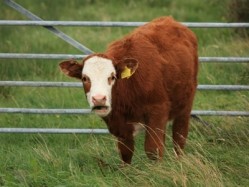US beef makes its way to UK tables

The US exports 20,000 tonnes of beef, worth about $200m, a year to the European market . This is only 0.2 per cent of the 8 million tonnes of beef consumed in the EU, but the meat is growing in popularity among restaurateurs.
“In the last five years we’ve seen US beef exports to Europe double every year, but among European countries the UK has been a really tough market to crack. We’ve always been very puzzled by this because London is extremely dynamic with relatively high purchasing power, yet is hasn’t developed as fast as other markets. However, this is now changing, and we see more and more interest from a wide range of restaurants in London,” said John Brooks, USMEF regional director for Europe, Russia and the Middle East.
One of the reasons why UK restaurateurs are showing increased interest in US beef is that the US practises the total segregation of meat and dairy herds, reducing stress for animals.
“To market US beef in the UK, we focus on the fact that the breeds come from the UK [Angus originates from Scotland for example], animals are born on ranches where they can spend time outside and stay with their mothers until weaning, eating the grass available right up until the end of their lives. In the last few months of their lives (a minimum of 100 days before slaughter), they are fed a high-energy cereal diet. This is very strictly defined, in terms of energy provided according to the weight of the animal. As the result, the animal produces intramuscular fat or marbling, which is what makes the big difference between American beef and European beef,” continued Brooks.
Another difference between US and UK meat is the way it is graded. In the US grading is done after slaughter, according to the marbling, or intramuscular fat present in the meat, and maturity, whereas in the UK grading is done according to the breed, conditions of life and age of the animal.
And while most restaurants in Europe would prefer traditional steak cuts such as sirloin and ribeye, UK chefs also use a lot of ‘around cuts’ (topside and silverside for example), cuts that US exporters are promoting heavily in the country.
When it comes to marketing US meat to British customers who might usually prefer locally reared beef, John Cadieux, group executive chef at Goodman Restaurants, said it’s important to sell the whole story. “What we really wanted was a good story about our American beef so I’ve been to Nebraska four times and every year we bring over about six chefs. That is an investment in our staff and it costs a lot of money, but it shows we connect with our supply chain.”
Another historical reasons that can make it difficult to market US beef in the UK is the hormone controversy of the 1990s, during which the EU banned all beef import from animals that had received hormone treatments during their lives. Canada and the US opposed this ban, saying it had no scientific grounds, but the EU maintained it.
Today all the US beef shipped to the EU is produced under a non hormone-treated cattle programme (NHTC), which guarantees that the animals are never treated with a hormone growth promoter, or any other growth promoter, from birth to slaughter. This is verified by the restaurants and can be used as a selling point for customers.





















